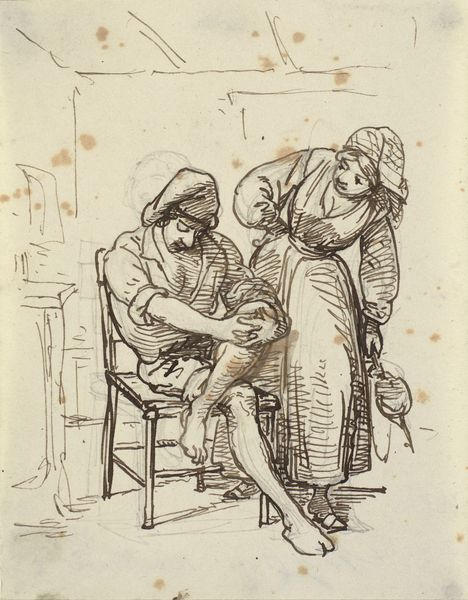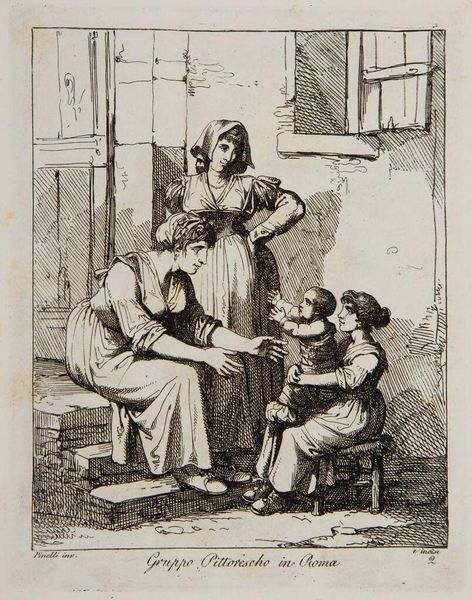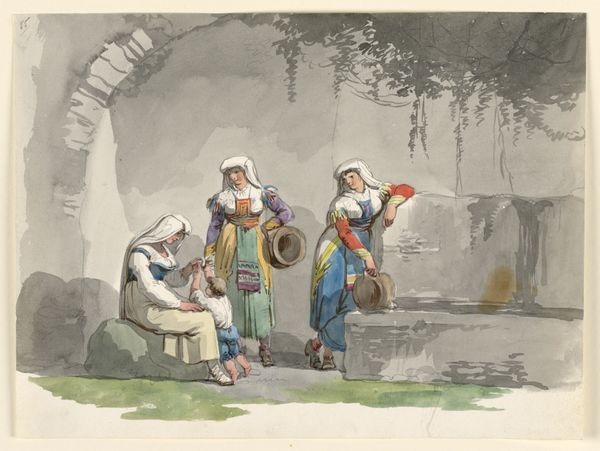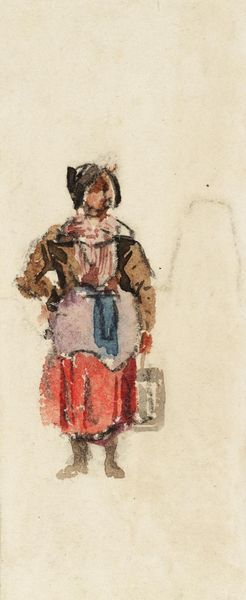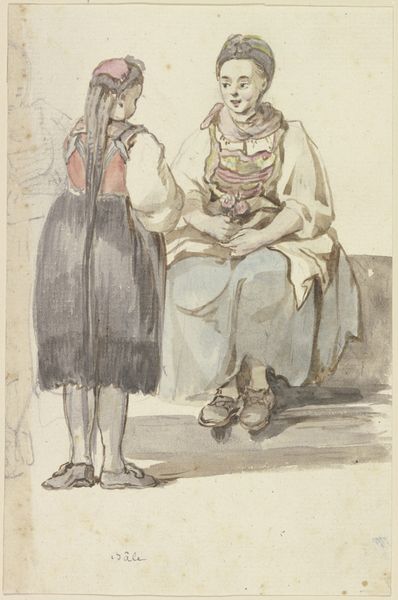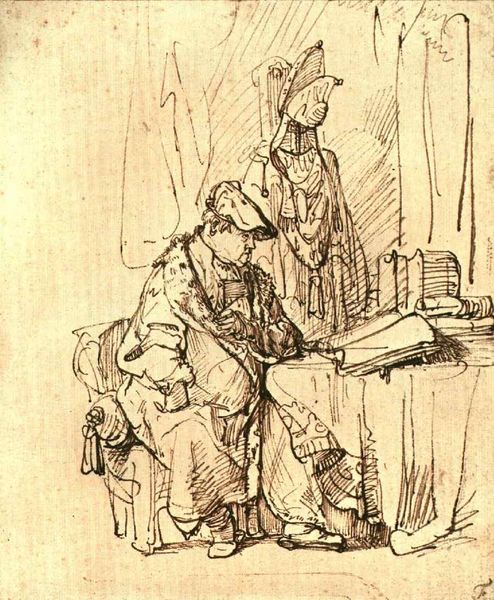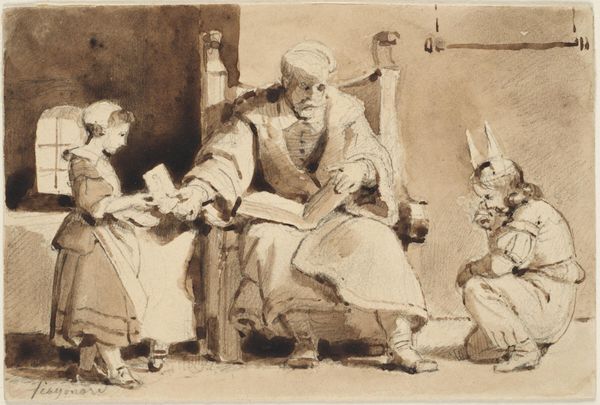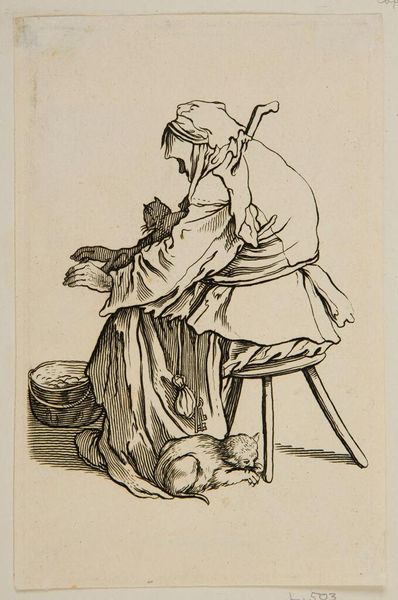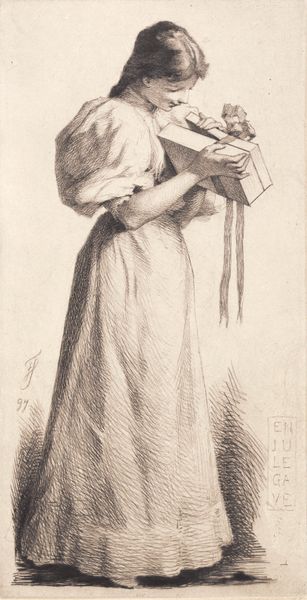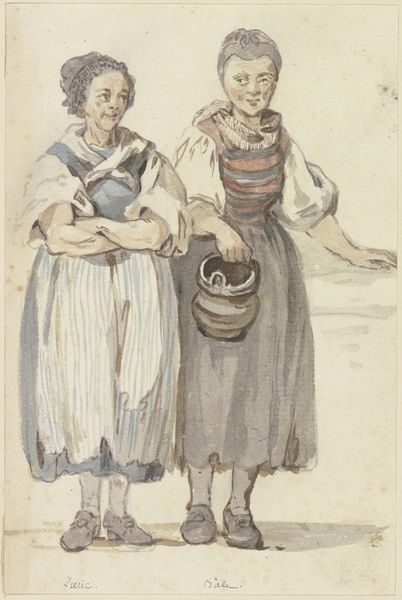
#
charcoal drawing
#
possibly oil pastel
#
charcoal art
#
oil painting
#
acrylic on canvas
#
underpainting
#
costume
#
painting painterly
#
portrait drawing
#
watercolor
#
digital portrait
Dimensions: 36.3 x 28 cm
Copyright: Public domain
Editor: This is "Italian Peasant Girls," created around 1834 by Orest Kiprensky. It’s currently housed in the Hermitage Museum. I’m immediately drawn to the soft washes of color and how the clothing almost seems to define their roles. What can you tell me about it? Curator: This watercolor presents an opportunity to reflect on how rural women were viewed and represented in 19th-century art. Kiprensky's choice to depict these women in traditional clothing evokes a sense of timelessness. But consider the socio-political context: Was this an idealized image, or did it reflect the actual lives of these women? And who was it created for? Editor: I see what you mean. The way they're posed almost romanticizes their existence, especially the standing figure gazing into the distance. Were such depictions common at the time? Curator: Absolutely. These portrayals served to reinforce certain narratives about the purity and simplicity of rural life, often in contrast to the perceived corruption of urban centers. The female figure became symbolic of traditional values, her body politicized through artistic representation. Do you notice any symbolism in their clothing or posture? Editor: Well, the head coverings seem quite modest, almost concealing their individuality. And the contrast between the standing woman, who seems almost expectant, and the seated one, who looks more contemplative, could suggest different roles or stages in life. Curator: Precisely. Kiprensky subtly navigates the representation of female identity within a specific cultural and historical framework. Think about the power dynamics at play when male artists depict women in this way. Are they giving voice, or reinforcing stereotypes? Editor: That's a lot to think about. It makes me question my initial, perhaps naive, interpretation. Curator: And that questioning is crucial. By critically examining these historical representations, we can better understand the ongoing struggles for women's agency and self-representation in contemporary society. Editor: I’m going to look at similar portraits with a more critical eye now, keeping those power dynamics in mind. Thanks for opening my eyes to all this.
Comments
No comments
Be the first to comment and join the conversation on the ultimate creative platform.

